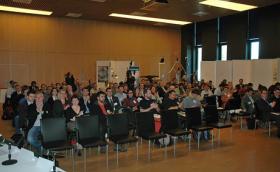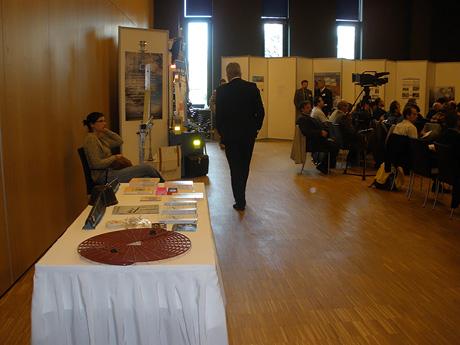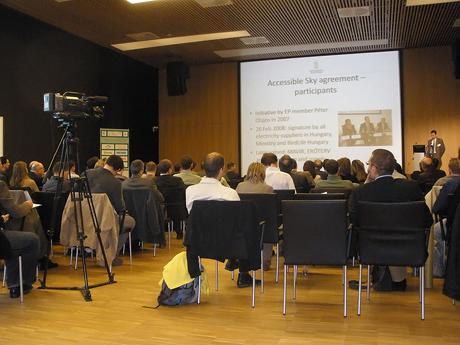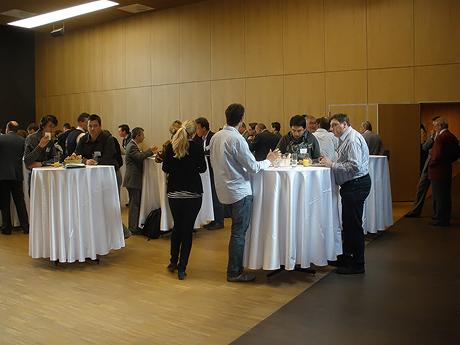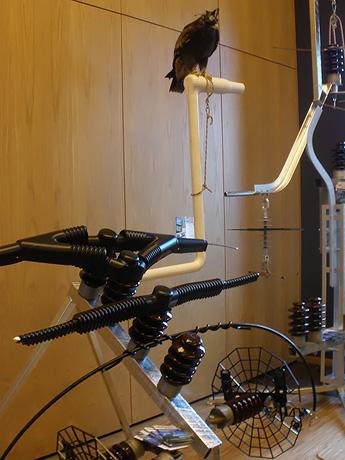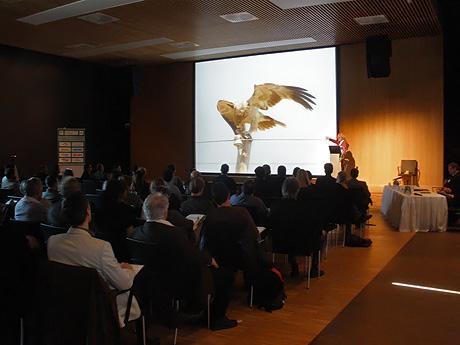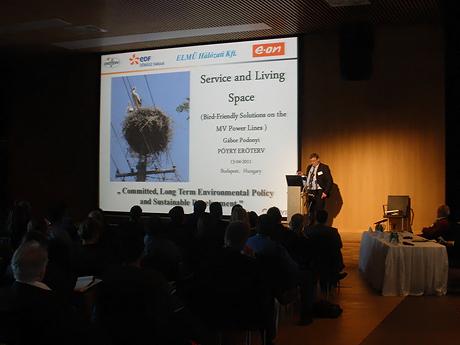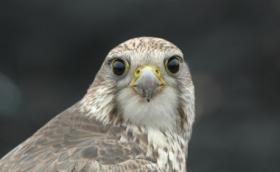Budapest Declaration
on bird protection and power lines
Adopted by the Conference “Power lines and bird mortality in Europe”
(Budapest, Hungary, 13 April, 2011)
The Conference “Power lines and bird mortality in Europe” (the Conference) was co-organised by MME/BirdLife Hungary, the Ministry of Rural Development of Hungary and BirdLife Europe and was kindly hosted by MAVIR (the Hungarian Transmission System Operator Company Ltd.), as part of the official programme of the Hungarian EU Presidency in 2011. It was attended by 123 participants from 29 European and Central Asian countries, the European Commission, UNEP-AEWA, six energy and utility companies, experts, businesses and NGOs. Following a review of current bird safety on power lines across Europe, and taking stock of progress achieved and future challenges in ensuring implementation of relevant international and national legislation, the participants of the Conference adopted the following Declaration:
We call on the European Institutions (Commission and Parliament) and national governments
- as they formulate, commit to, and pursue an ambitious set of climate, energy and biodiversity conservation targets and strategies to reconcile energy generation, transmission and distribution with the protection of wild birds within and beyond protected areas;
- to maintain high levels of implementation of the EU's environmental acquis including the Birds and the Habitats Directives and relevant international legislation through the application at national or regional level of effective legal, administrative, technical or other requisite measures for: 1) minimisation of the negative impacts of power lines on the natural environment and wild birds and 2) ensuring a system of general protection of wild birds, as required by the Birds Directive, and 3) ensuring that such considerations are incorporated in the assessment of investment projects such as the electricity ‘Projects of European Interest’ that will be advanced through the follow-up of the EU’s Energy Infrastructure Package.
We call on all interested parties to jointly undertake a programme of follow up actions leading to effective minimisation of the power line induced bird mortality across the European continent and beyond. Such actions are, for example:
|
I. Preparatory actions, to be implemented by the end of 2012 |
|
| Action | Applies to |
| 1. Set up groups of experts on bird safety on power lines in each country and at the international level to review and consolidate the available technical standards for bird safety on power lines; to develop National and European programmes for prevention and mitigation of bird electrocution and collision; to facilitate exchange of technical, biological and managerial experience and support implementation of such programme |
Governments: |
| 2. Develop and kick off an internationally coordinated start-up programme for knowledge transfer, including the maintenance of an international roster of experts and regular communication on technical and managerial issues; to collate and publish bird electrocution and collision-related literature; to develop internationally standardised monitoring protocols; to expedite a Pan-European movement towards improving bird safety on power lines, including research and development as well as communication projects and voluntary cooperation between industry, public administration and civil society. | National (EU) National (non-EU) International |
| 3. Support ongoing exchange of experience between EU and non-EU countries to reduce and eliminate bird electrocution and collision on power lines. | National (EU) National (non-EU) |
|
II. Planning and standard verification actions, to be completed by the end of 2015 |
|
| 4. Prioritise power lines for mitigation in accordance with bird distribution data and in consultation with relevant government, industry, academic and NGO experts. Set up a detailed mid-term strategy and an implementation plan for mitigation measures. | National (EU) National (non-EU) |
| 5. Develop and approve national technical standards and catalogues of bird-safe power pole designs (for new lines) and mitigation measures (for retrofitting existing lines) relevant for each country. Promote these standards through formal training of technical staff and sub-contractors and regular conferences. | National (EU) National (non-EU) |
|
III. Ensure that bird losses are to be eliminated on new and fully reconstructed power lines from 2016 onward |
|
| 6. Ensure that new and fully reconstructed power line sections are safe for birds by design. | National (EU) National (non-EU) |
|
IV. Mitigation actions on existing power lines, to be completed by 2020 |
|
| 7. Ensure that priority power lines in term of bird conservation/distribution and the most dangerous pole types in all lines are retrofitted/changed to bird-friendly lines and pole types. | National (EU) National (non-EU) |
|
V. Monitoring and reporting of progress |
|
| 8. Promote and support financially internationally standardised monitoring of the impacts of power lines on birds, including the necessary evaluation of the effectiveness of mitigation measures. | National (EU) National (non-EU) Industry |
| 9. To report every two years (starting from 2012) on the actual progress in the implementation of Resolution 110 of the Bern Convention and of this Declaration. | National (EU) National (non-EU) |
1CMS (Bonn) Resolution 7.4 (2002) and Bern Recommendation 110 (2004) provide strong recognition and acceptance of the birds and power line problem and the availability of effective solutions.

